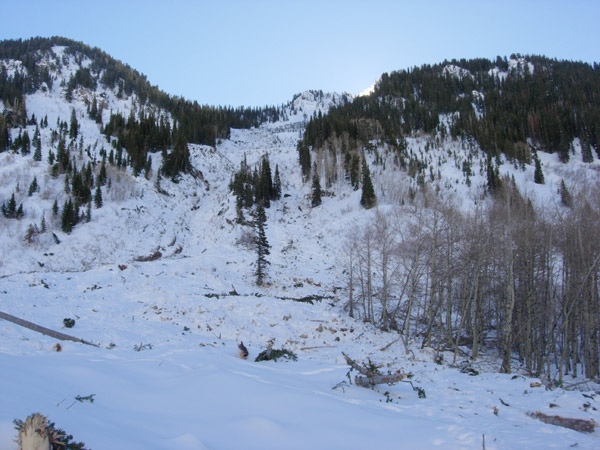
Explosive triggered avalanche cycle
We had a big storm beginning on about the 6th of January with some light density snow followed by days of strong winds and heavy snowfall. Several of the days tours can be found in the Journal .
After the storm numerous natural avalanches were found and reported, some quite large. During and after the storm the ski areas were getting large avalanches with some unusual results from explosives.

One shot in the Thunder bowl area above Baby Thunder lift at Snowbird initiated a slide which in turn triggered two other slides to the west. The Scotties bowl area was the most obvious, sliding across the summer trail and larger than witnessed in previous years.
On the 13th of January it was clear, allowing the helicopter operation to begin "stability testing." Since it wasn't a Sunday or Monday, they are allowed to ski in the Tri canyon area and this is where the testing began. Two slides were triggered in Cardiff.
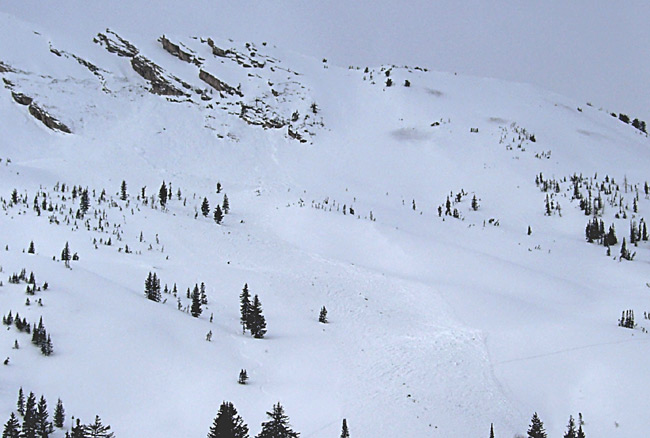
This area is called the rock slabs and is between Cardiac Ridge and High Ivory east facing in Cardiff Fork. Not a real good picture, but shows numerous bomb craters in the High Ivory area.

This is a better view of High Ivory with five bomb craters evident.
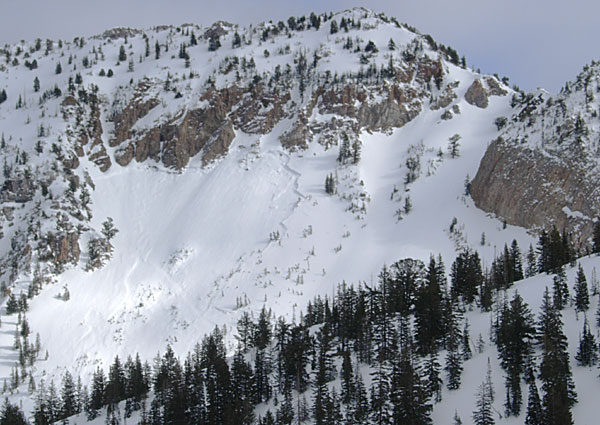
Another bomb, possibly more triggered a slide in Holy Toledo.
Okay. There's a couple of avalanches with numerous bombs dropped. The next day not satisfied apparently with the results, another bombing mission takes place with results called spectacular. On the 17th, the last day of avalanche school, my group exited Silver Fork crossing the disaster area created from the run out of the big slide off the west ridge.
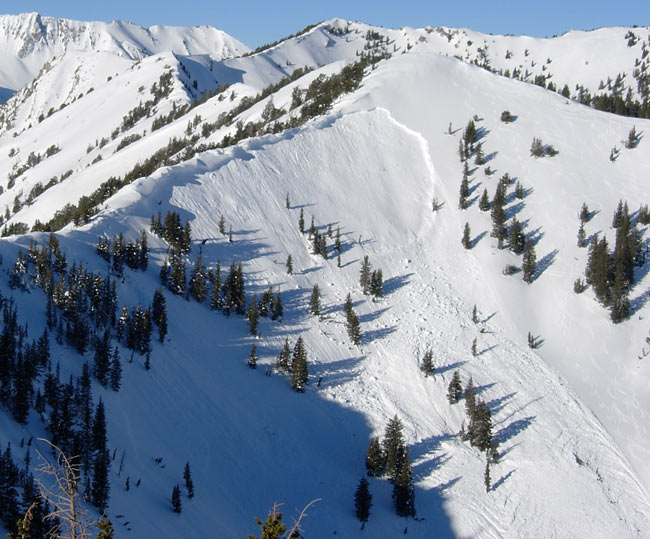
This is the West Bowl of Silver Fork. The north facing had avalanched twice this winter, but not as large as this time with explosive "stability testing."
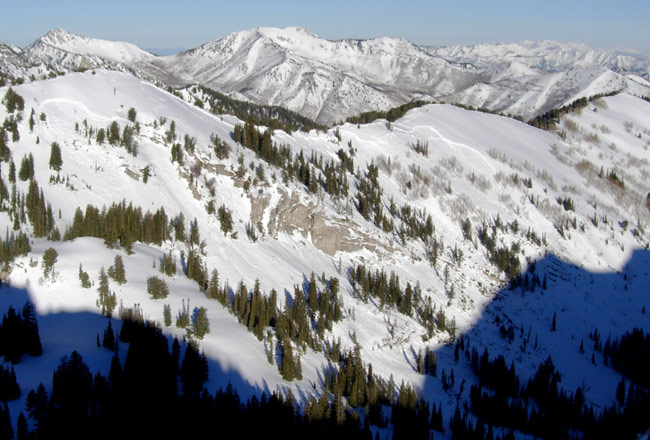
This view is from the top of Davenport looking northwest.
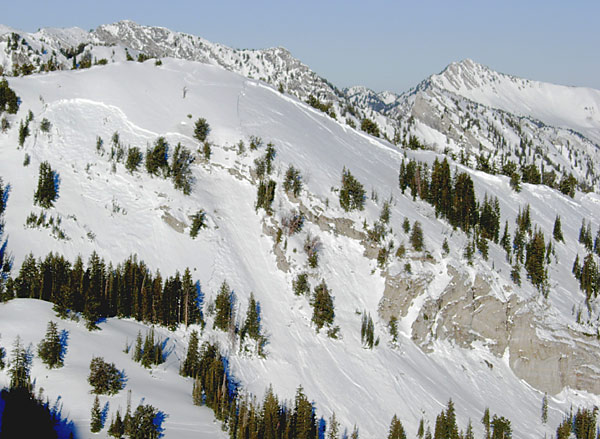
A closer view of the south end of the slide, showing a bomb crater just above the crown on Doug's Drop.
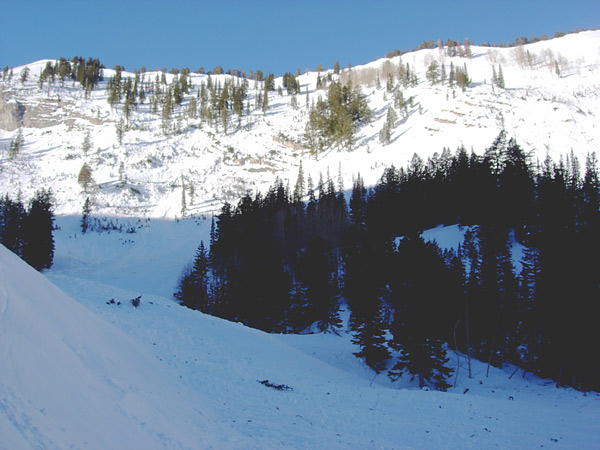
This is a view of a portion of the debris pile looking back up canyon at the edge of Doug's and the Meadows.
The next drainage to the west also has a slide explosively triggered in Days Fork.This shows the crown of the slide in what's called Banana Belt.
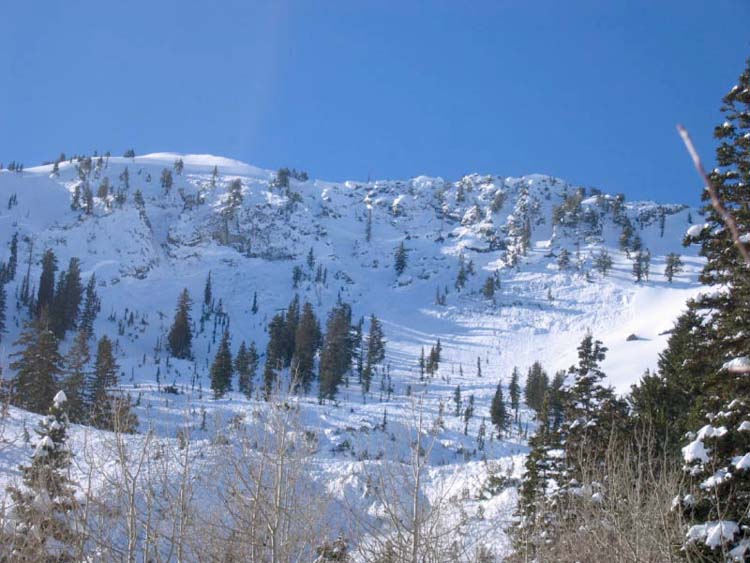
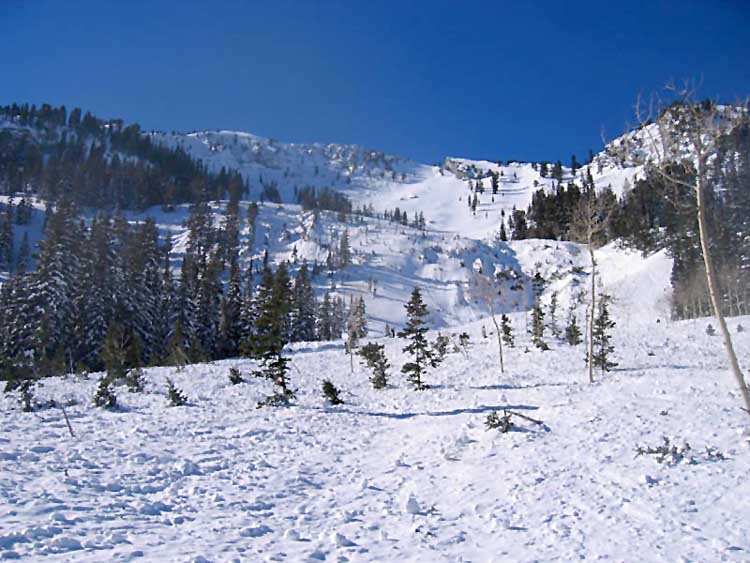
From the bottom of Banana Belt looking up at the crown, the picture shows the extent of the slide with a good sized debris pile and trees down.
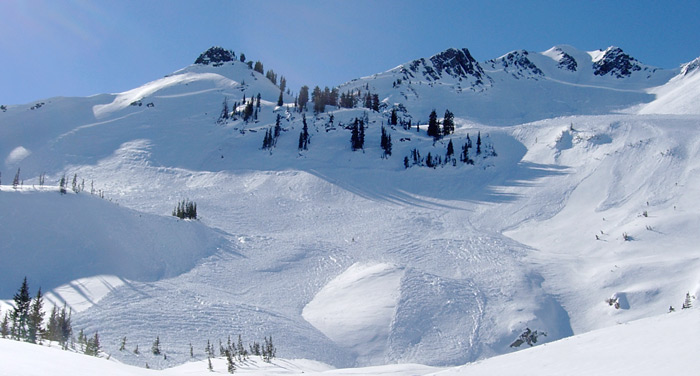
This picture shows a slide in upper Cardiff, explosively triggered on the 14th including Little Superior Buttress. I went back through the area on Sunday the 22nd for better pics.
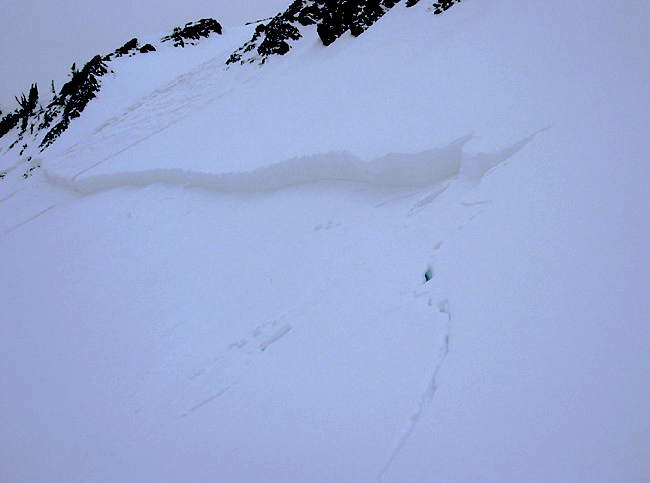
A close up of the crown from just west of the slide near Cardiac ridge with a stress fracture running into the crown.
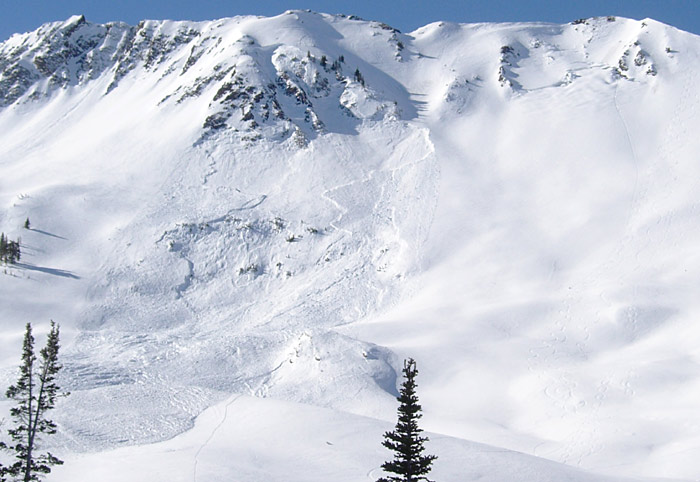
Another slide was triggered the same day. The rocky area just south of Cardiac ridge slid with stability testing. What's interesting is the large glide crack running across the main ridge run, just looker's right of the avalanche.
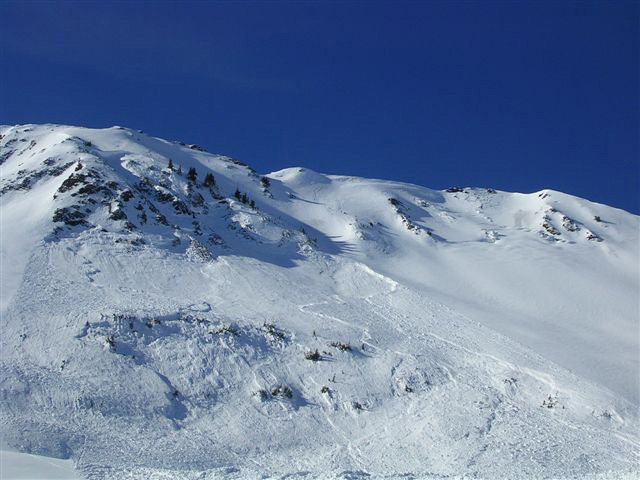
Another Marla Bailey photo with the damage very visible.
Looking at the list of avalanches found here, I don't see the Mineral Fork slides listed. My assumption is they were explosively initiated at the same time as the second series of slides in Cardiff, on the 14th.
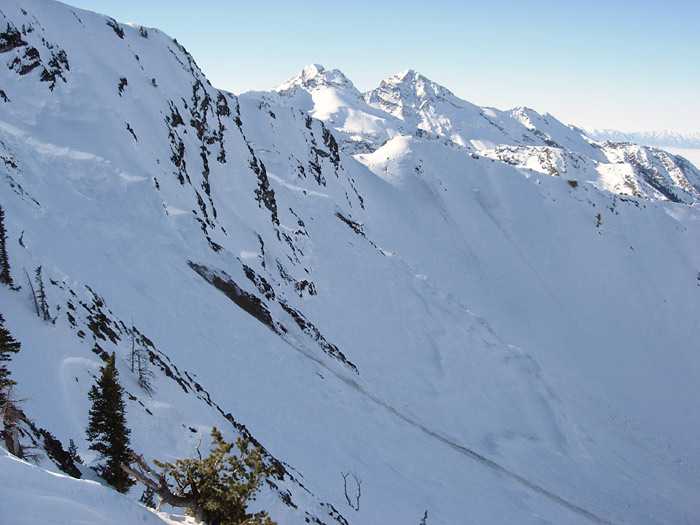
Looking into Mineral from Cardiac ridge, I see two bomb craters and the whole upper bowl avalanched.
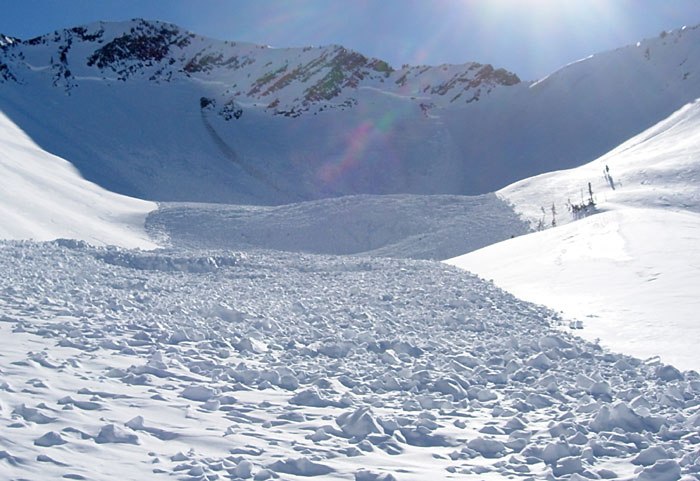
Wasn't easy but I managed to enter upper Mineral with this view of the upper bowl. Once again the lighting didn't cooperate.
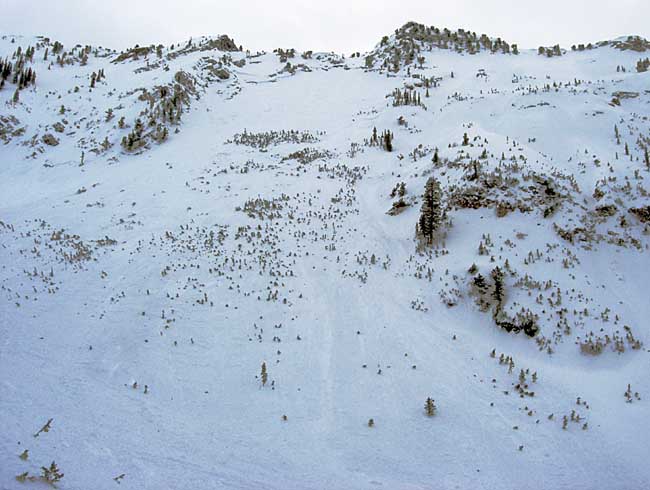
Lower in the Mineral Fork drainage was a very large avalanche removing trees from it's path as it ran. It's called Marietta and the photo is looking up at the crown.
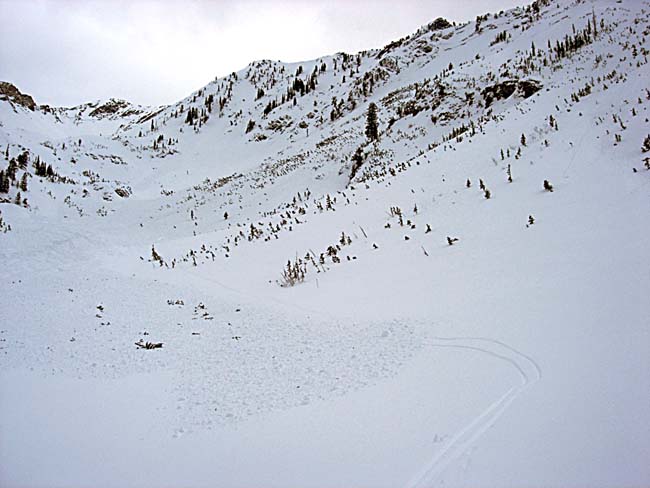
Descending through the rubble took a while since the slide ran about 2'000 vertical. The picture is looking back up canyon just below the run out of the slide.
Thinking the slide cycle and explosive testing had ended plans were made to do a little recreational skiing in wilderness to the south, where solitude was almost guaranteed, but it was learned that yet another large avalanche had been explosively triggered on Red Baldy, so a visit there was required.
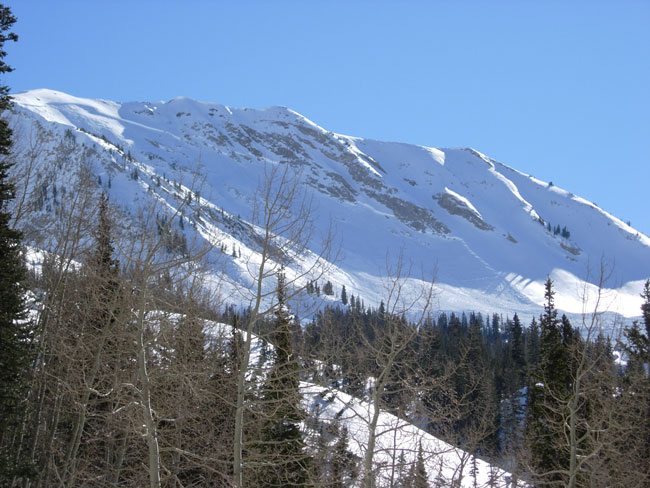
The first view of the slide after walking up the east side of White Pine, crossing a number of natural slide paths, which ran during the storm, none as large as the slide on Red Baldy.
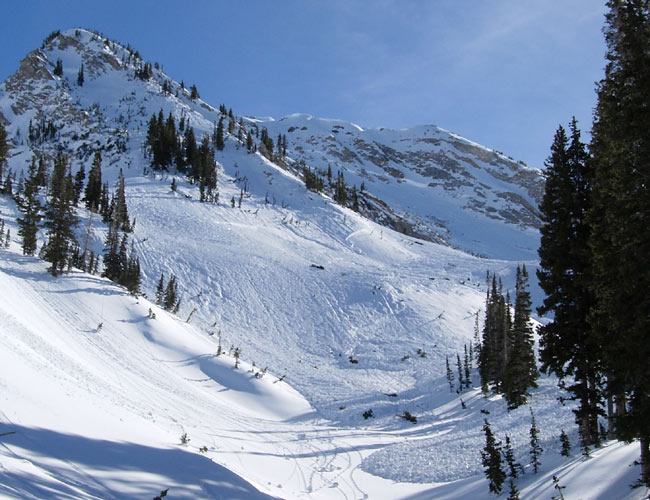
Closing in on the main slide with evidence that the northeast facing sub ridge was also avalanched.
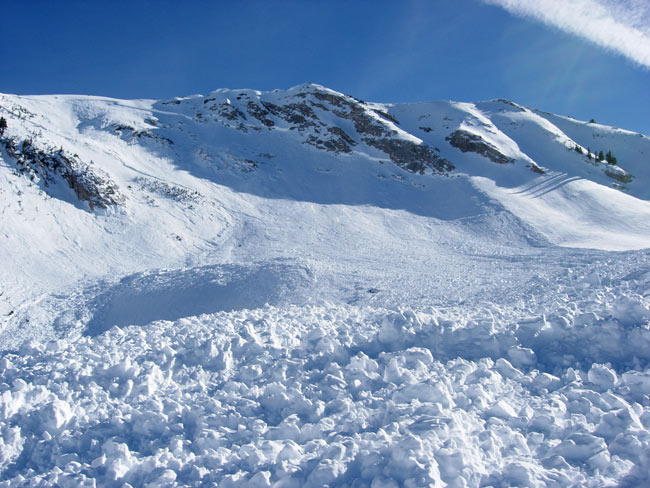
Entering the main Red Baldy cirque the evidence is spectacular with debris strewn for a couple of thousand vertical.
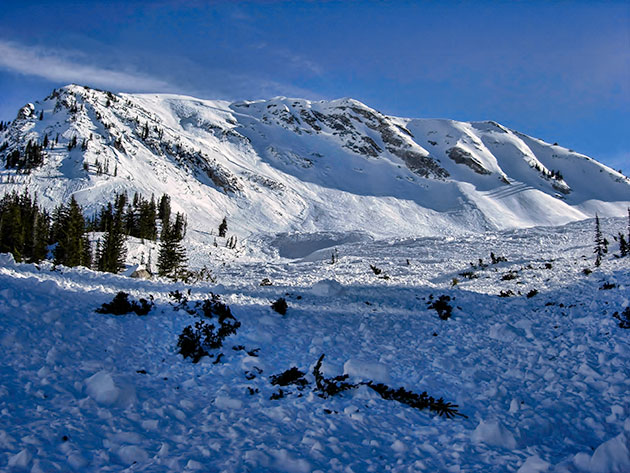
Leaving the slide path arena. From my perspective, somewhat jaded, I know, it appeared that every large path in White Pine had run during the storm with at least two earlier slide cycles. The last remaining area without avalanche was brought out with a "stability test" using explosives.
I would call what happened over the space of a week, not stability testing, using indicator shots, but rather random avalanche control with disastrous results. Makes a person wonder.